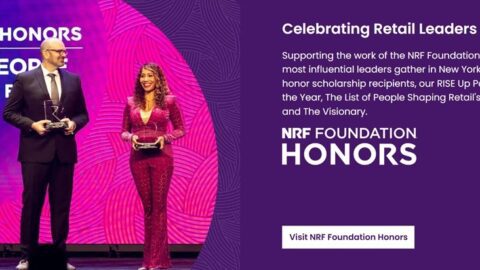While the mid-winter season doesn’t have the retail heft of the holidays, it isn’t a sales dead zone either: the average American adult will spend $81.30 for the Super Bowl, totaling $14.8 billion nationwide, according to a survey by the National Retail Federation (NRF) and Prosper Insights & Analytics. Valentine’s Day will be an even bigger event: spending is expected to reach $161.96 per participant this year, totaling more than $20 billion.
Super Bowl spending hasn’t changed much in recent years. Per-shopper spending peaked in 2016 at $82.19 before falling to $81.17 in 2017. However, viewership may be down this year —188.5 million (76% of the country) planned to watch the game in 2018, while just 182.5 million adults (72% of the country) plan to watch in 2019.
Those watching the game make related purchases from a number of categories:
- 79% will buy food and beverages;
- 10% will buy team apparel and accessories;
- 7% will buy decorations;
- 7% will buy new televisions; and
- 4% will buy furniture such as entertainment centers.
It’s not too late for retailers to capitalize on the festivities: sales of game-day staples like chips, dips, soda and beer soared on the day of the Super Bowl in 2018, according to Criteo. Additionally, sporting goods sales spiked immediately following the game, with sales jumping 422% compared to the average Sunday in January.
Retailers should be prepared to handle mobile sales as well: the start of the 2018 Super Bowl impacted sales on all devices as fans tuned in, but mobile activity drew even with desktop when the game started after being eclipsed earlier in the day.
“The numbers vary from year to year, but regardless of the economy, politics or the weather, most Americans manage to take a break every year for the Super Bowl,” said Phil Rist, VP of Strategy at Prosper Analytics in a statement. “The big game is a day for big spending regardless of who plays or wins.”
Super Bowl Ads Grab Young Shoppers’ Interest
Nearly a quarter of consumers (24%) plan to attend a party, while 17% will throw one and 5% will watch from a bar or restaurant, according to the NRF and Prosper Analytics. While 43% of watchers say the game is the most important part, others are looking forward to other festivities:
- Commercials (23%);
- Getting together with friends (14%);
- The halftime show (13%); and
- Food (7%).
While the commercials are undeniably popular, the survey found that 76% of shoppers see them as entertainment and only 10% are influenced to make a purchase. However, their impact is greater among younger views: 17% of shoppers aged 18 to 24 say the commercials influence them to make a purchase, while 16% are prompted to search online for more information.
Valentine’s Day Celebrations Are Down, But Spending Is Still Up
Valentine’s Day spending is being affected by two opposing trends: fewer people are celebrating, but those that do are spending more, according to the NRF and Prosper Analytics. A decade ago in 2009, more than 60% of shoppers planned to celebrate Valentine’s Day; in 2019, that figure has dropped to just over 50% . However, spending was just $102.50 per person during the height of the Great Recession, compared to the $161.96 being spent this year.
One of the factors bolstering spending is that 25% of shoppers who technically are not celebrating the holiday still plan to treat themselves, hold a get-together or even purchase an “anti-Valentine’s Day” gift. These habits are more common among younger consumers, with more than a third of shoppers under the age of 35 not celebrating — but still splurging for the occasion.
The most popular shopping destination for Valentine’s Day is department stores, frequented by 35% of shoppers, followed by discount stores (32%), e-Commerce sites (27%), specialty stores (18%), florists (16%), small or local businesses (14%), jewelry stores and specialty clothing stores (9% each).
Traditional gifts are still popular among those who embrace the holiday:
- Jewelry (18% will purchase, totaling $3.9 billion spent);
- An evening out (34% will purchase, totaling $3.5 billion spent);
- Clothing (18% will purchase, totaling $2.1 billion spent);
- Candy (52% will purchase, totaling $1.8 billion spent);
- Gift cards (15% will purchase, totaling $1.3 billion spent); and
- Greeting cards (44% will purchase, totaling $933 million spent).
Additionally, more shoppers are showing interest in giving a special experience rather than a tangible product. A full 25% plan to give a “gift of experience” like concert tickets or a day at the spa, rising to 39% among those 18 to 24 and 45% of those 25 to 34. The trend holds for Millennials year-round: 50% have given a gift of experience, and 83% are interested in giving one in the future.












